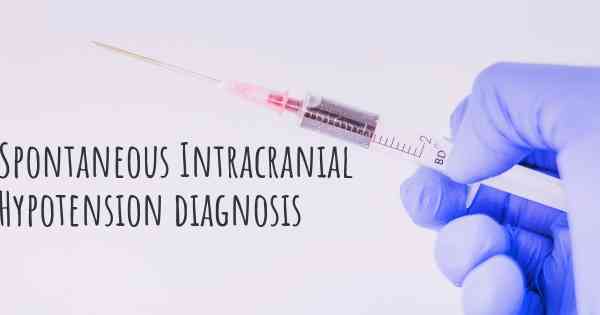How is Spontaneous Intracranial Hypotension diagnosed?
See how Spontaneous Intracranial Hypotension is diagnosed. Which specialists are essential to meet, what tests are needed and other useful information for the diagnosis of Spontaneous Intracranial Hypotension

Spontaneous Intracranial Hypotension (SIH) is a condition characterized by low cerebrospinal fluid (CSF) pressure in the brain, leading to various symptoms such as severe headaches, neck pain, and dizziness. Diagnosing SIH involves a combination of clinical evaluation, imaging studies, and sometimes invasive procedures.
Clinical evaluation: The first step in diagnosing SIH is a thorough medical history and physical examination. The doctor will inquire about the patient's symptoms, their duration, and any factors that may trigger or alleviate them. They will also assess the patient's neurological function, focusing on signs of increased intracranial pressure or CSF leakage.
Imaging studies: Imaging techniques play a crucial role in diagnosing SIH. The most commonly used method is magnetic resonance imaging (MRI) of the brain and spine. MRI can reveal characteristic findings such as diffuse pachymeningeal enhancement (thickening of the protective covering of the brain) and downward displacement of the brain structures. Additionally, a specialized MRI technique called MR myelography can be performed to detect CSF leaks.
Invasive procedures: In some cases, further investigations are required to confirm the diagnosis of SIH. One such procedure is a lumbar puncture (also known as a spinal tap), where a small amount of CSF is extracted from the lower back for analysis. In SIH, the CSF pressure is typically lower than normal. If the initial lumbar puncture does not reveal low CSF pressure, a second one may be performed after injecting a small amount of contrast dye into the spinal canal to detect any CSF leaks.
Other tests: Occasionally, additional tests may be conducted to rule out other potential causes of the symptoms. These may include blood tests, CT scans, or radionuclide cisternography, which involves injecting a radioactive substance into the CSF to track its flow.
Overall, diagnosing SIH requires a comprehensive approach involving clinical evaluation, imaging studies, and sometimes invasive procedures. It is important to consult a healthcare professional if you experience persistent headaches or other symptoms suggestive of SIH, as early diagnosis and treatment can significantly improve outcomes.








